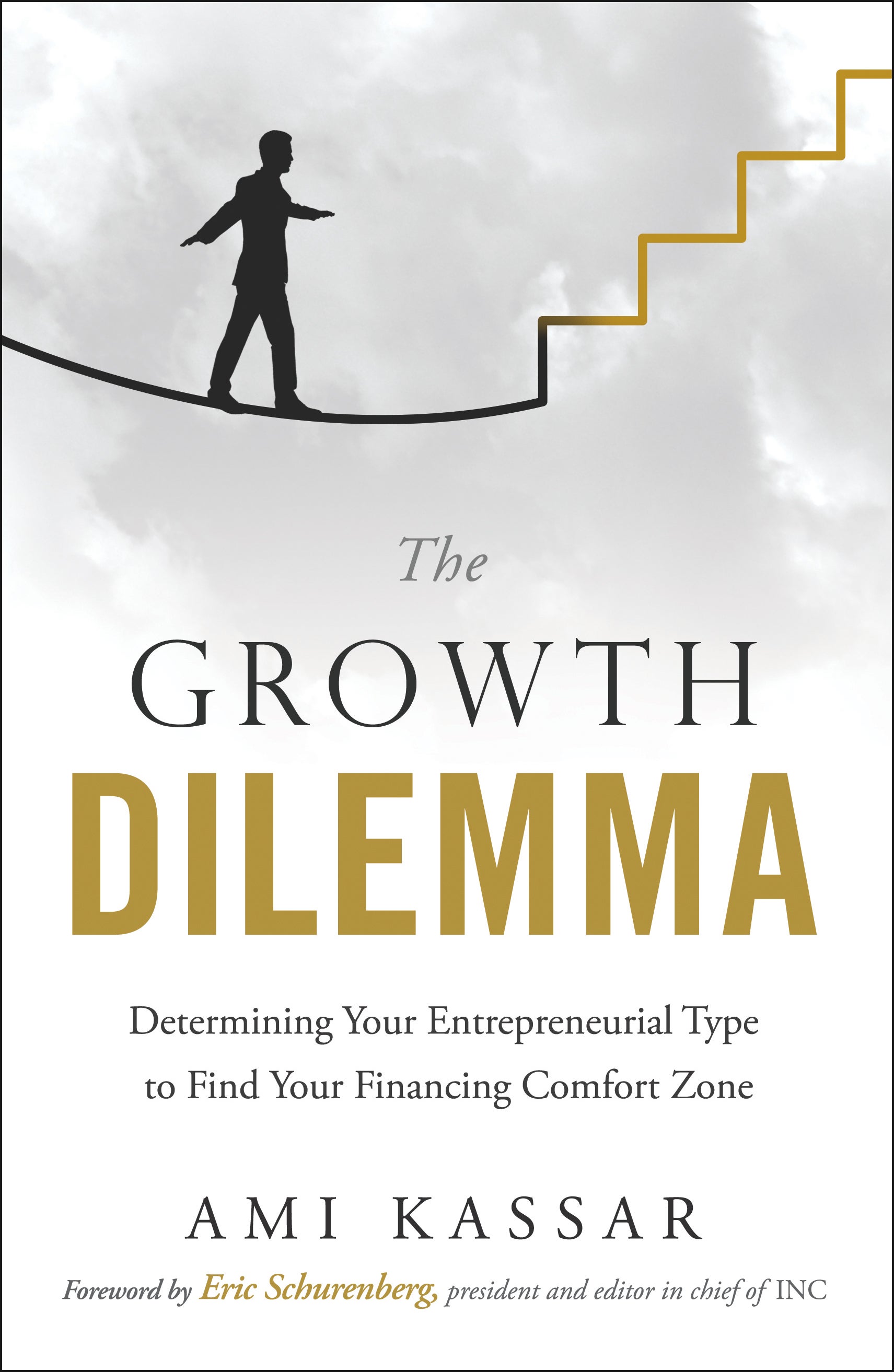
Adapted from the upcoming book The Growth Dilemma: Determining Your Entrepreneurial Type to Find Your Financing Comfort Zone.
If you ask me to describe the primary tension that has kept me awake over the past eight years as I have built my company, it is whether I am investing fast enough to ensure the best long-term viability of my business.
Some entrepreneurs don’t stay awake worrying about this. They’re in a rhythm—they’re content with their life and happy with their lot. But most entrepreneurs aren’t like that. They always want something more for their business, though they’re not sure what to do, how quickly to do it, how much risk to take, and how to fund it.
As in most tough decisions or issues that we struggle with, our real issue is not readily apparent, and we often hide behind an excuse. The most common story I hear is, “I would like to do this and that for my business, but I don’t have the money to do it.” But the money is often not the problem at all, or it is the easiest thing to solve for.
Turn the Question on Its Head
Sometimes the best way to push through a challenging issue is to turn a question on its head. The way I do this is to ask entrepreneurs: “If I gave you $1 million, how would you invest it and what return would you expect from it?”
A corollary we will also ask is: “If your company could borrow $1 million at 6 percent interest, would you do it? Where would you invest it?”
This is the core question. Its intent is to push you out of your comfort zone and challenge your assumptions about how you think about investing in your business and what your priorities are.
Other Questions for You to Answer
While the million-dollar question is a critical component of helping you think through the Rubik’s Cube of your personal growth dilemma, other dimensions need to be considered: how long you plan to stay in business, what lifecycle stage your business is in, how comfortable you are with risk, and how fast you want to grow.
Are You a Tortoise or a Hare?
Do you consider yourself to be a tortoise or a hare entrepreneur? Hare entrepreneurs are focused on quick exits, cashing out, and moving on. In that case, equity may be a sound idea.
Tortoise entrepreneurs want to make long-term investments (financial and emotional) into what they’re creating. They’re likely to be the type who prefers taking on debt and pursuing the slow-growth approach.
Your Lifecycle Stage
Think through your stage in the entrepreneurial lifecycle. Are you a glider, grower, speed-bumper, or exiter? Where you are personally will impact what your priorities are, which in turn will affect the way you think about investing in your business today.
Your Risk Tolerance
While it’s fine and dandy for me to offer you a hypothetical gift of $1 million, the reality is that if you decide to invest in your business to generate faster growth, and you do that by raising some kind of equity or debt, it’s going to come with risk. And often the issue that is masked in the growth dilemma is a legitimate and genuine fear of risk.
Take the time to get your risk score and decide how it’s impacting your growth dilemma.
How Much Growth and How Fast?
The final exercise is to measure your Growth Aspirations. Entrepreneurs think about growth in a variety of ways. Some are happy with modest growth, and others push hard for rocket-ship growth. There isn’t a right answer, but the way you think about this influences your growth dilemma.
My hope for you is that you will take all of these elements and exercises and challenge yourself to find your financing comfort zone. Should you raise more money to grow your business faster? It’s a complex and multidimensional issue that every entrepreneur needs to wrestle and struggle with. That’s why it’s helpful to read the stories of real entrepreneurs who, like you, have used these tools to help them find their financing comfort zones.
 Author: Ami Kassar is the founder and chief executive officer of Multifunding LLC, a Philadelphia-based consulting firm that specializes in helping business owners across the United States develop creative, cost-saving alternatives for their business debt needs and structure.
Author: Ami Kassar is the founder and chief executive officer of Multifunding LLC, a Philadelphia-based consulting firm that specializes in helping business owners across the United States develop creative, cost-saving alternatives for their business debt needs and structure.
Kassar has been involved in business finance for two decades. He has advised the White House, The Treasury Department and The Federal Reserve Bank on the state of the financing markets. He writes a weekly column for Inc.com and is frequently quoted in the national press on various small business issues. He has been speaking across the country for over 3 years to CEO’s, CFO’s, accountants, small business owners, and other thought leaders – totaling over 100 events. Follow @growthdilemma on Facebook and Twitter.
6685 Views













